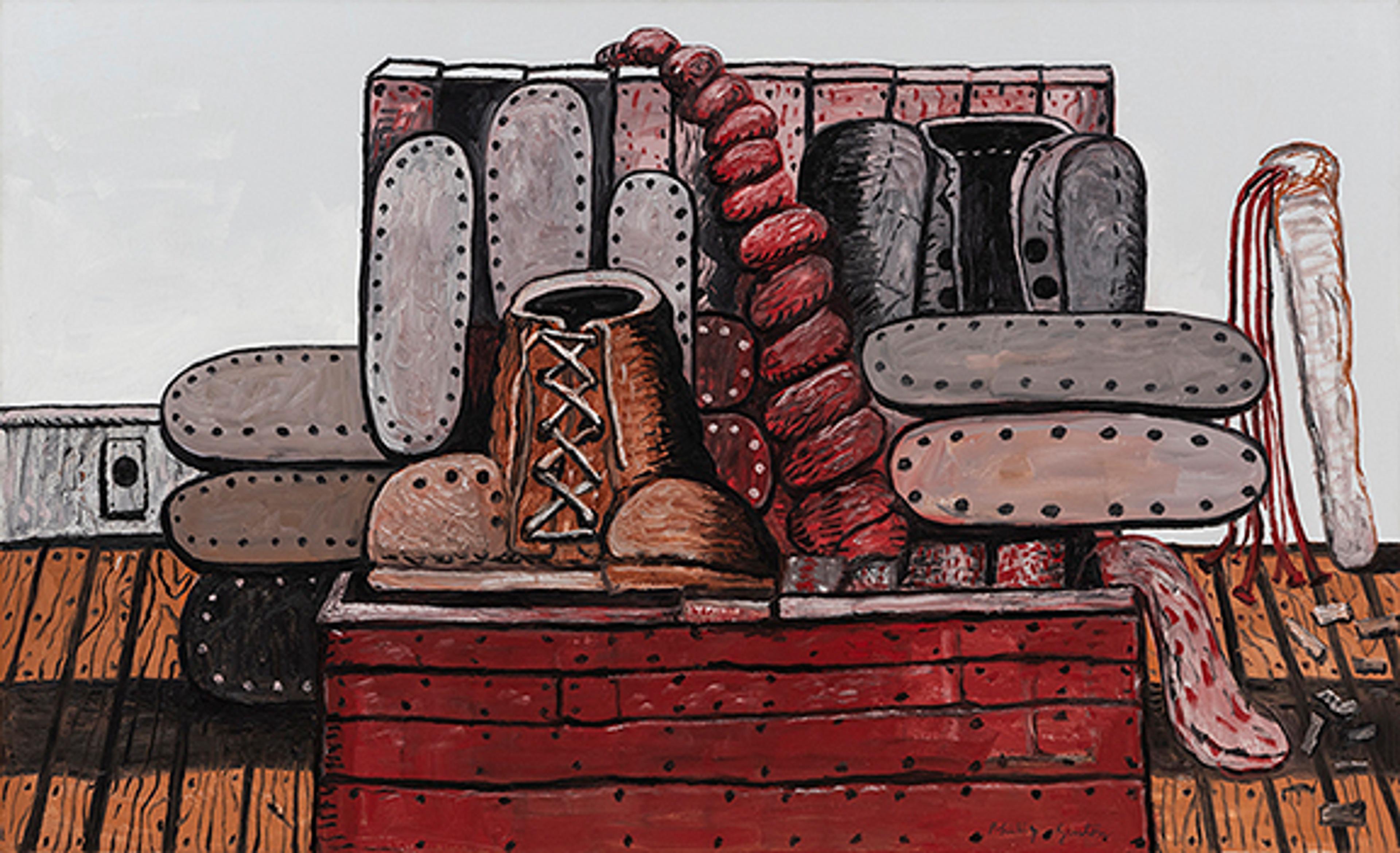
About
This grouping offers a glance into the divergent approaches to composition that exemplify the broad gamut of artistic discourse in the late 1970s. Sol Lewitt’s Floor Piece #2, one of eighteen related sculptures, epitomizes the artist’s investigation into open modular cubic structures of the mid-1970s and recalls his 1966 maxim that “the most interesting thing about the cube is that it is relatively uninteresting.” As in similar works, the cube is deployed by Lewitt as a “grammatical device from which the work may proceed.” Lynda Benglis’s intuitive approach to organic forms and her application of gold leaf on the sinuous, wall-mounted sculpture stands firmly as an alternative to the monochromatic and geometric use of industrial materials championed by artists like Lewitt. The work dates to a pivotal period in the artist’s career when novel techniques for metalizing screen armatures enabled her to create seemingly lighter and supple metal works. Meanwhile, after an abrupt and forceful departure from nonreferential abstract painting, Philip Guston’s pictorial vocabulary had distilled several motifs that appear in various works by 1977. The cat-o’-nine tails whip immediately recalls depictions of the Passion by the Old Masters, whom Guston described as major influences, while the worn boots and shoe soles protruding out of an open box evoke war and genocide—a somber approach to the unfolding horrors of the 20th century that, according to the artist, partially drove his rejection of formalist abstraction.
Loan Duration
1 - 2 years
Loan period
Fall 2026 – Fall 2028
Total Artworks
3
Century
20th Century
lending Museum
Akron Art Museum
Facility Requirements
Artworks can be hung together or dispersed throughout the galleries.
Support
Art Bridges covers all costs to prepare and ship the artworks to the borrowing museums. The foundation encourages borrowing museums to apply for accompanying Learning & Engagement funding to support the activation and interpretation of Partner Loan Network artworks. Learning & Engagement funding supports multidisciplinary programming, interpretive materials, and community outreach.

